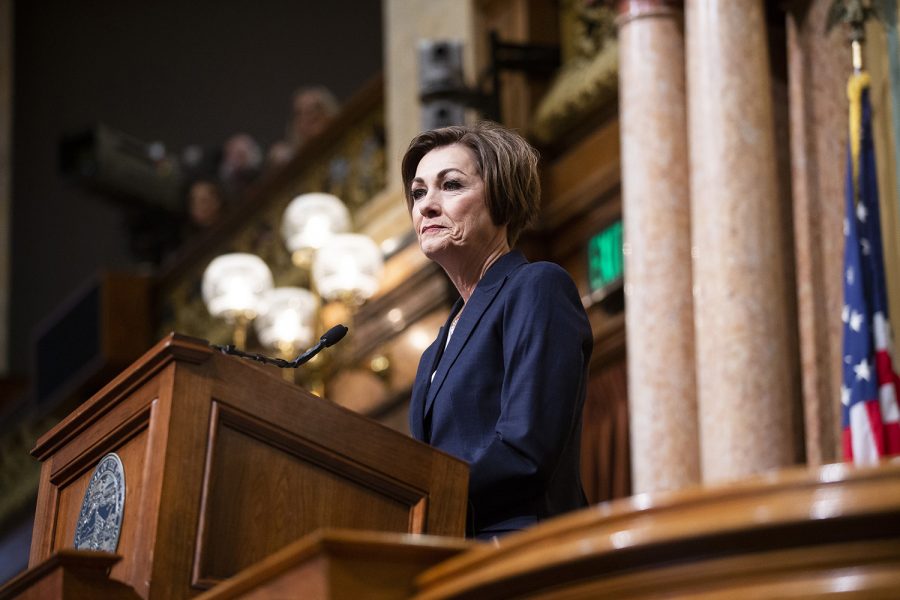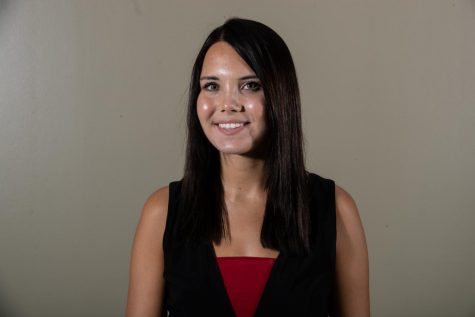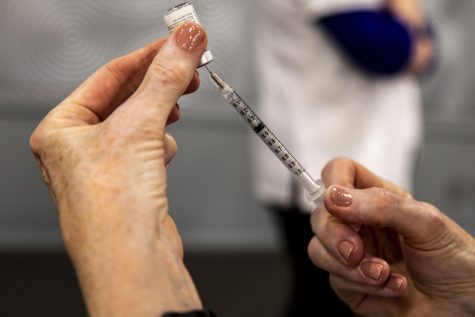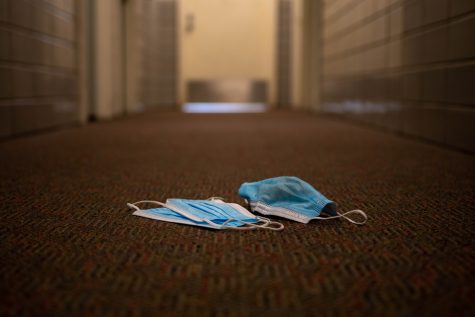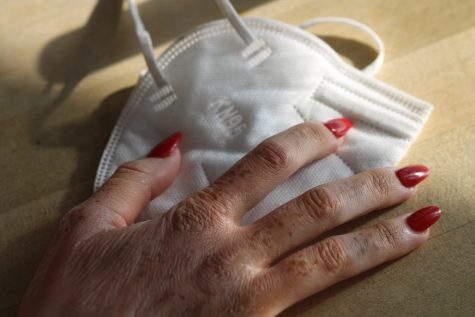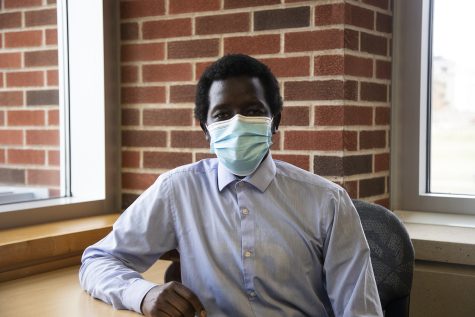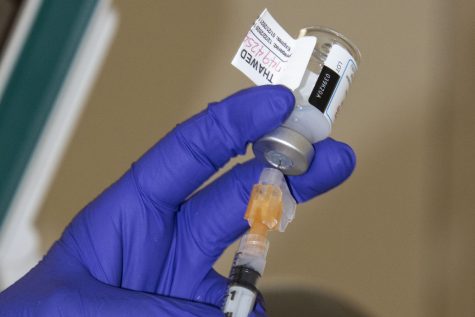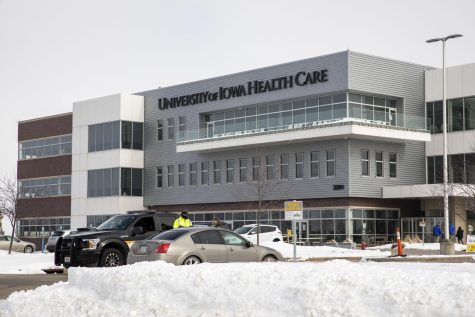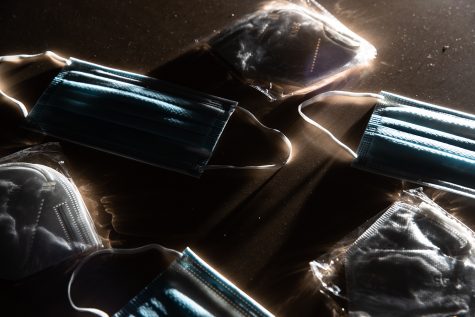Governor’s push for reopening creates rift with health experts
As the governor moves to reopen 77 counties across the state, some public health officials are raising alarms that the actions will result in a resurgence in infections and deaths.
Gov. Kim Reynolds speaks during the Condition of the State address at the Iowa State Capitol on Tuesday, January 14, 2020.
May 4, 2020
Though public health experts are warning against reopening the state too early, Gov. Kim Reynolds is pushing for a quick return to business across the state, backed by a swath of Republican legislators.
Though she said her decisions aren’t political, response to Reynolds’ actions has fallen fairly evenly along party lines. On April 24, nine Republican state legislators signed on to a letter commending Reynolds’ efforts to open up the state and pushing for businesses to be able to open again quickly.
Reynolds’ decision to reopen parts of the state went against a report given to the Iowa Department of Public Health by University of Iowa researchers, saying a second wave of infection is likely if the state lifts social distancing guidelines too early.
Republicans supporting reopening echoed the governor’s own sentiment that the economic and mental health implications of the shutdown need to be taken into the calculus of when and how to reopen.
Friday, businesses and retail stores in 77 counties were allowed to resume operations at 50 percent capacity while observing social distancing guidelines. Religious services across the state are allowed to resume, though many churches are still continuing online and drive-in services. Elective surgeries and farmers markets were also allowed to resume April 24.
Rep. Steven Holt, R-Denison, who wrote the letter, mentioned that people aren’t going to hospitals for routine screenings, and so heart disease, diabetes and other conditions may not be getting caught as early as they would otherwise.
“We have to understand the ramifications,” he said. “When we’re looking at this situation, we have to look at not only the coronavirus, we can’t look at that in a vacuum … remaining closed is doing a lot of damage to our hospital system.”
Rural hospitals are increasingly strapped for cash as elective procedures have dried up. As of May 3, 357 COVID-19 patients were hospitalized in the state. Iowa has 247 ICU beds available and more than 4,000 standard hospital beds, according to the Institute for Health Metrics and Evaluation updated May 4.
One major justification for aggressive containment measures in March was to prevent overwhelming the hospital system, but advocates for reopening say that has not happened.
However, Megan Srinivas, an infectious disease doctor at the Fort Dodge Community Clinic, said the hospitalization rates don’t adequately communicate the capacity of the state’s health-care system.
Srinivas said a lot of COVID-19 patients end up needing intensive care, and so the ICU bed capacity is an important factor. Additionally, personal protective equipment and special equipment are needed to care for patients, and many hospitals in Iowa are still facing shortages.
Reynolds’ decision has drawn fire from Democrats and public health experts who say the restrictions are being lifted too early, and that the state is not in a position to test at the volume it should be to contain the coronavirus.
On the same day our governor is “reopening” 77 counties, we have a new one-day high of 740 new #COVID19 infections. What is going on here? https://t.co/GfqtXd8B5R
— Zach Wahls | Social Distancing Saves Lives (@ZachWahls) May 1, 2020
During Reynolds’ daily press conferences, she said the report from the UI researchers was not based on Iowa-specific modeling, even though the researchers used Iowa-specific data.
Aaron Miller, an assistant professor of epidemiology at the UI who worked on the report, said any easing of social distancing will increase the reproductive number of the virus, which determines how many secondary infections will result from a typical case.
When it comes to Reynolds’ current orders, Miller said that the results will largely depend on how Iowans behave, which can be difficult to project on a model.
“It could be the case that as we open things back up, people don’t change their behavior at all. Businesses don’t actually open up, people don’t go back out. And then you might not see as much of a second wave or a continuation of an increase in cases,” he said.
But if activity in counties that are opening back up returns to the same levels as before the virus, Miller said cases are likely to shoot back up.
The push to open Iowa comes as more than a dozen other states are lifting shelter-in-place orders and reopening, trying to strike a delicate balance between public health and economic viability.
In Georgia, gyms, restaurants, and movie theaters have been allowed to reopen. In South Dakota, Gov. Kristi Noem, a Republican, is allowing employers and local governments to make the decision on reopening.
Despite official White House guidelines requiring two weeks of decreasing cases and robust testing, President Trump has been encouraging states reopening, sometimes against his own administration’s guidance.
Srinivas and Miller both said Iowa has likely not seen a peak in cases. Positive tests as a proportion of total tests increased throughout April and early May, and Srinivas said with three fourths of the state easing social distancing, cases are likely to continue increasing.
“It’s really going to be in about three to five weeks that we see that drain on our hospital resources and or health-care resources,” Srinivas said. “And that’s the time when we’re going to see the impact of the decisions we make today.”
Testing is another area that experts say should be improved in order to properly handle the virus.
Christine Petersen, director of the Center for Emerging Infectious Diseases at the University of Iowa, said the goals set forth by Test Iowa — the public-private partnership expected to increase testing in the state by 3,000 tests a day for three months — were on track with where testing should be, but that the state hasn’t been able to implement the program fully yet.
As of May 1, the State Hygienic Lab was still working to validate the Test Iowa equipment, which involves running several negative and positive tests through an accredited lab.
In addition, testing volume for SHL has grown significantly over the past month, as initial clinical testing of individual patients has expanded to include testing at long-term care facilities and meat-packing plants, serology testing and work related to the Test Iowa program, Communications Director at the Office of the Vice President for Research wrote in an email to the DI May 1.
Petersen said health officials face bottlenecks in supplies for testing which make it difficult to test as many people as planned.
“I hope that our ambition can be met by the ability to do the testing, and then we should be fine,” Petersen said.
On May 1, the state reported 2,925 total tests. Higher single-day totals have been reported in days since, but those numbers include a backlog of tests from the previous week at Test Iowa sites.
Srinivas said testing is still inefficient in the state. She pointed to a study recently done by the Harvard Global Health Institute, which estimates that 152 tests should be administered per 100,000 people to properly understand the extent of the virus and identify pockets of high infections.
In Iowa, that would mean testing 4,788 people a day.
“Without any data, we’re just making assumptions based on, really nothing,” she said. “And that’s the dangerous part. Some of the assumptions might end up being correct based on when we get data but some of them are likely not.”



